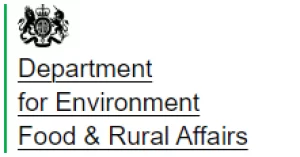The Farming in Protected Landscapes Programme will pay for projects that, in the opinion of the Local Assessment Panel (see ‘Application assessment’ below) provide value for money and meet at least one of the outcomes listed below, under four themes.
Nature outcomes
- There is a greater area of habitat improved for biodiversity
- There is an increase in biodiversity
- There is greater connectivity between habitats
- Existing habitat is better managed
Climate outcomes
- More carbon is stored and/or sequestered
- Flood risk is reduced
- Farmers, land managers and the public better understand what different habitats and land uses can store carbon and reduce carbon emissions
- The landscape is more resilient to climate change
People outcomes
- There are more opportunities for people to explore, enjoy and understand the landscape
- There are more opportunities for more diverse audiences to explore, enjoy and understand the landscape
- There is greater public engagement in land management, such as through volunteering
- Farmers and land managers feel increasingly comfortable with providing public goods
Place outcomes
- The quality and character of the landscape is reinforced or enhanced
- Historic structures and features are conserved, enhanced or interpreted more effectively
- There is an increase in farm business resilience
Your project must also help to deliver at least one of the actions of the Solway Coast AONB Management Plan 2020 – 2025. Details of these actions can be found here, between pages 30 and 61.
For example, the programme might support:
- Re-wiggling a straightened watercourse, for the biodiversity and natural flood management benefits this can bring
- Replacing stiles with gates on public footpaths to promote easier access
- Restoring kested hedges across a landholding
- Creating wader scrapes, or creating ponds to support a variety of wildlife
- Promoting connectivity between habitats
- Creating and promoting a series of farm walks across a cluster of farms, providing new access opportunities, links to the rights of way network and interpretation of farming and of the natural and historic features on the land
- Conserving historic features on a farm, such as a saltpan or a piece of military heritage
- Parking improvements at a key site provide safe access to popular walking routes and reduces congestion for visitors and for local residents
- A pop-up camping facility, alongside the provision of new walking trails and on site activities, including e.g. stargazing and dawn chorus walks
- Supporting a locally-branded food initiative which promotes the links between the product and the landscape in which it is produced
- Re-wilding an area of land and promoting natural processes
- Action to reduce carbon emissions on a farm
- Whole farm planning for conservation, energy efficiency and economic resilience, including in farmer clusters
- Gathering data and evidence to help inform conservation and farming practice
- Working with new audiences to enable them to experience the Protected Landscape
Payment rates
The Programme will work alongside – not in competition with – Defra’s existing and new schemes, adding value where it is most needed. If a potential project can be rewarded through those schemes instead, you will be made aware of them.
If an activity is equivalent to one under Countryside Stewardship (CS), the Programme payment rate will be the same as the CS rate. If not, we will base Programme funding offers on the projected costs of an activity (with final payments made against evidenced costs).
Maintenance agreements
Capital infrastructure assets (including, but not limited to, fences, gates, building restoration), should be maintained for 5 years from the date of completion.
Machinery assets (for example a brush harvester for grassland restoration) should be maintained for 5 years from the date of purchase.
The requirement to maintain natural, cultural and access activities (for example, management of grassland, or restoration of a historic feature) delivered as part of programme will cease no later than 1 April 2025.
More detail on this can be found in the Guidance to Applicants.

